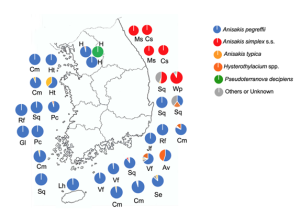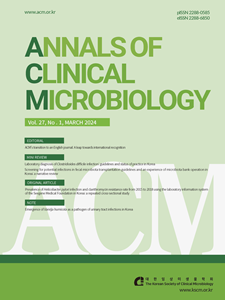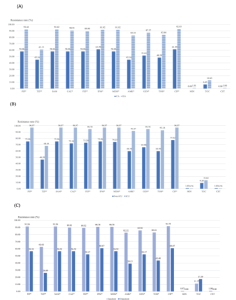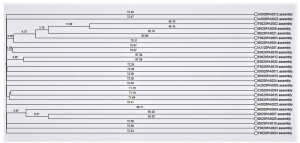
Anisakidosis in humans and animals and detection of anisakid larvae in fish and cephalopods in Korea: a literature review (1971-2022)
Review article Jong-Yil Chai1, Woon-Mok Sohn2, Bong-Kwang Jung3 1Department of Tropical Medicine and Parasitology, Seoul National University College of Medicine, Seoul2Department of Parasitology and Tropical Medicine, Gyeongsang National University College of Medicine, Jinju;3MediCheck Research Institute, Korea Association of Health Promotion, Seoul, Korea Corresponding to Jong-Yil Chai, E-mail: cjy@snu.ac.kr Ann Clin Microbiol 2024;27(2):93-130. https://doi.org/10.5145/ACM.2024.27.2.6Received on 3 April 2024, Revised on 23 April 2024, Accepted on 29 April 2024, Published on 20 June 2024.Copyright © Korean Society of Clinical Microbiology.This is an Open Access article which is freely available under the Creative Commons Attribution-NonCommercial-NoDerivatives 4.0 International License (CC BY-NC-ND) (https://creativecommons.org/licenses/by-nc-nd/4.0/). Abstract Human anisakiasis (or anisakidosis) is a disease caused by the ingestion of marine fish or cephalopods infected with anisakid nematode larvae of the genera Anisakis, Pseudoterranova, Contracaecum, and Hysterothylacium. Anisakiasis is a clinically important disease that often manifests as an acute abdominal syndrome requiring emergency medical attention and care. In Korea, at



